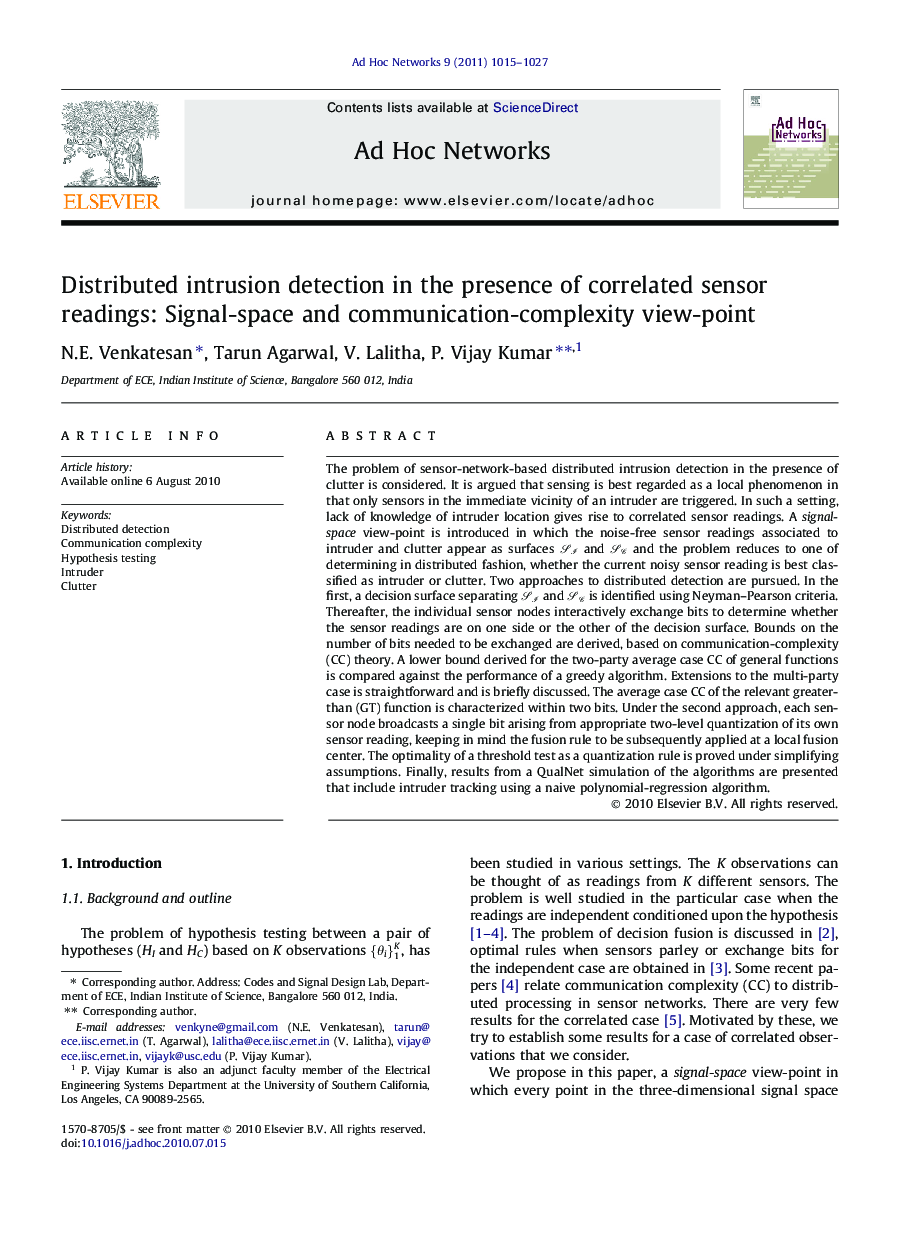| Article ID | Journal | Published Year | Pages | File Type |
|---|---|---|---|---|
| 445582 | Ad Hoc Networks | 2011 | 13 Pages |
The problem of sensor-network-based distributed intrusion detection in the presence of clutter is considered. It is argued that sensing is best regarded as a local phenomenon in that only sensors in the immediate vicinity of an intruder are triggered. In such a setting, lack of knowledge of intruder location gives rise to correlated sensor readings. A signal-space view-point is introduced in which the noise-free sensor readings associated to intruder and clutter appear as surfaces SISI and SCSC and the problem reduces to one of determining in distributed fashion, whether the current noisy sensor reading is best classified as intruder or clutter. Two approaches to distributed detection are pursued. In the first, a decision surface separating SISI and SCSC is identified using Neyman–Pearson criteria. Thereafter, the individual sensor nodes interactively exchange bits to determine whether the sensor readings are on one side or the other of the decision surface. Bounds on the number of bits needed to be exchanged are derived, based on communication-complexity (CC) theory. A lower bound derived for the two-party average case CC of general functions is compared against the performance of a greedy algorithm. Extensions to the multi-party case is straightforward and is briefly discussed. The average case CC of the relevant greater-than (GT) function is characterized within two bits. Under the second approach, each sensor node broadcasts a single bit arising from appropriate two-level quantization of its own sensor reading, keeping in mind the fusion rule to be subsequently applied at a local fusion center. The optimality of a threshold test as a quantization rule is proved under simplifying assumptions. Finally, results from a QualNet simulation of the algorithms are presented that include intruder tracking using a naive polynomial-regression algorithm.
